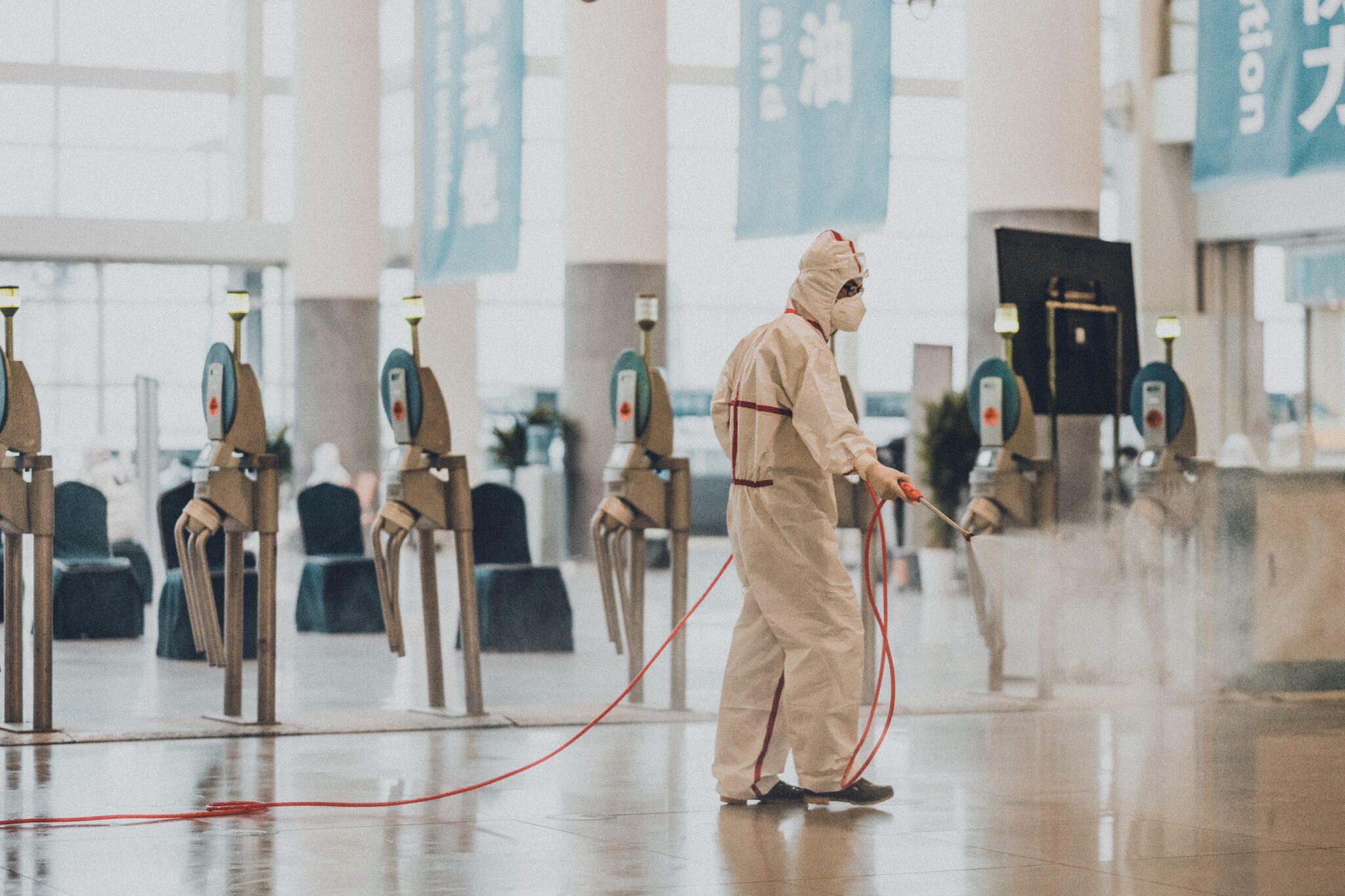If you’re dealing with mold in your home, you may have wondered if an ionizer could be the solution you’re looking for. The short answer? It’s complicated, and here’s what manufacturers don’t want you to know.
Mold is one of the most inconvenient intruders you could deal with in your home. Not only does it enter undetected, but you generally have a significant mold problem on your hands by the time you recognize that there’s an issue.
Whether you are sensitive to mold or not, the fungus can cause irritation across your skin, face, and within your lungs. If you or a loved one is indeed allergic, it poses real dangers to your health and well-being. Mold spores can cause flare-ups and serious illness.
Many people opt for ionizers as a way to reduce mold. Others swear by air purifiers; as you read this article, you’ll see that there isn’t one clear winner between the two. If you’ve been searching for ways to reduce mold, you’re in the right place.
What is an Ionizer and How Does It Work?
Ionizers are handy devices that use ions, in other words, electrically charged particles, to remove irritating contaminants from the air. This is useful for people who struggle with asthma, allergies, or other sensitivities.
There are few other methods as effective as ionizers for taking care of dust and other materials floating through the air of your home.
The Science Behind Ionizers
Ionizers are fantastic pieces of technology. Using electricity, it disperses negatively charged air molecules into the room. On the contrary, pollen, dust, bacteria, and other similar substances are positively charged.
These two charges, both negative and positive, brush against each other, causing them to attract. As they combine, their weight together is too much to stay suspended in mid-air, and they fall to the surface below.
This effectively cleans the air and helps prevent rooms from accumulating too many contaminants, which can lead to mold or other unpleasant developments.
Ionizer vs. Air Purifier: Which is Better for Mold?
Both ionizers and air purifiers are often purchased to address similar problems, but many homeowners fail to take the time to compare the two technologies. While both are used to remove irritant airborne particles, they have different strengths.
Air Purifiers
Air purifiers physically pull in air through the filter in the machine. These filters are designed to capture dander, pollen, and other dust-sized contaminants from the environment. This eliminates the source of many allergies and asthma triggers.
Unfortunately, air purifiers have their limits. The bigger the space you are attempting to purify, the larger and more expensive a device will be. You are also signing yourself up for regular maintenance, such as filter swapping.
Ionizers
Ionizers, on the other hand, rarely require filters. This is because the machine is not actively pulling in air, but instead spreading the negatively charged ions we discussed widely. Another upside is the reach, ionizers generally cover more airspace for less.
In terms of efficiency, loudness, and upkeep, ionizers take the top spot on the podium. For more effective environmental cleansing, air purifiers are a step ahead.
The Truth About Ionizers and Mold Removal
When it comes to reducing mold, ionizers can help alleviate the situation, but will not completely remedy it. As we discussed earlier, ionizers remove contaminants from the air (and this includes mold spores) by weighing them down sufficiently to bring them to the ground.
What Ionizers Can Do:
- Remove mold spores from the air temporarily
- Reduce the concentration of airborne particles
- Help prevent some mold spores from spreading to new areas
What Ionizers Cannot Do:
- Kill existing mold colonies
- Remove mold from surfaces
- Address the moisture problems that cause mold growth
- Provide a permanent solution to mold problems
This can help address symptoms of serious mold problems, but it will require a little more effort on your part. Because the particles have collected on surfaces, vacuuming and dusting are a must!
It makes your job easier by removing the actual mold particles from the air. On the other hand, it does not entirely remove them from the space.
Ionizers will remove the particles from the air, but they have no place to go except the walls, floors, tabletops, and other common surfaces around your home. While it may prevent you from breathing in mold spores floating in midair, they continue to pose a threat as long as they linger around.
As another unfortunate downside, even cleaning the collected particles from surfaces will kick up some spores. These mold particles can be perilous to your health and that of your household. Furthermore, if there is actual mold buildup, an ionizer won’t be able to eradicate it.
Hidden Downsides of Ionizers for Mold Control
Ozone Production Concerns
Many ionizers produce ozone as a byproduct, which can be harmful to your respiratory system. The EPA warns that ozone at ground level can exacerbate asthma and other respiratory conditions, potentially worsening your health problems, rather than improving them.
The Redistribution Problem
While ionizers pull particles out of the air, they simply redistribute them to surfaces throughout your home. This means that mold spores can easily become airborne again through everyday activities, such as walking, cleaning, or even air movement from your HVAC system.
False Security
Most importantly, ionizers can give you a false sense of security. The air might smell cleaner and feel fresher, but the root cause of your mold problem (excess moisture) remains completely unaddressed. This can lead to delayed action when prompt remediation could have saved significant time and money.
When You Need Professional Mold Remediation
Despite the effectiveness of ionizers (and air purifiers), once you have a mold problem, clearing the air will only do so much. Mold is a danger that must be addressed quickly due to its rapid spread. These spores are called mycotoxins, which are airborne toxins produced by many mushrooms and molds.
Signs You Need Professional Help:
- Visible mold growth larger than 10 sqft
- Persistent musty odors even after cleaning
- Recurring health symptoms when at home
- Mold returning after DIY removal attempts
- Water damage or flooding in your home
Mycotoxins produced by mold growth can cause unexpected health problems, including coughing, headaches, and other illnesses. If you or someone in your household has asthma or other similar conditions, they are very susceptible to complications from breathing in the spores.
You may still be experiencing the adverse effects of mold; if so, what should be your next course of action?
If you’re taking the problem seriously, it is likely time to call some professionals. Compleat Restorations offers comprehensive mold remediation services that address the root cause of your mold problem.
Our residential mold remediation eliminates the mold. Simply killing the mold is insufficient, as dead mold still has the potential to cause illness.
Our trained and licensed mold remediation team possesses the knowledge, tools, and safety equipment necessary to eliminate mold in your home permanently.
Ready to solve your mold problem for good? Contact Compleat Restorations today for a professional assessment and learn how we can help restore your home’s air quality permanently.


